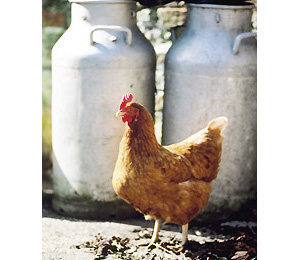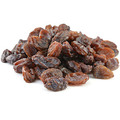Mixed farming: rural past or rural future?
Could a return to the pre-war model of farming livestock and crops together on small plots of land offer a solution to both environmental and food-security concerns in the UK? By Liz Falkingham

Farming’s image veers from hero to villain – sometimes within the same week – making it difficult to form a definite opinion. Take arable farming. One moment it’s a barren landscape devoid of biodiversity, the next a necessary production system providing affordable grain for humans and animals. In the middle of this mix is, well, mixed farming – time, some say, for us to go back to our common-sense rural past.
There’s nothing new about mixed farming – it was the norm in the pre-war era, but is it now the answer to our food security and environmental troubles? Apart from its sentimental appeal, it’s also good farming practice. Rotating crops boosts soil fertility and stops weed and parasite build-up. And straw-rich farmyard manure improves soil structure and so benefits the intricate ecosystem that co-exists with food production.
Patrick Holden, former Soil Association director, believes a return to mixed farming is both essential and inevitable. “We rely on chemical fertilisers and sprays based on oil, which is running out and produces emissions. In order to reduce our dependence on them we will need to build up soil fertility through crop rotations.” He believes our landscapes will look radically different within 50 years – gone will be the grain-hungry intensive pig and poultry units, and in their place will be native breeds of livestock able to utilise the clover-rich pastures that fix nitrogen in the soil. Domestic grain production will drop by 40 per cent, and what remains will be consumed locally, instead of subjected to the vagaries of the global market. “We need a strategy now for the re-localisation of key staples such as vegetables, meat and dairy products. We can’t wait for the oil to run out and food prices to go crazy,” he says. The Archers’ agricultural advisor Graham Harvey takes the argument a step further in The Carbon Fields. “Grasslands do not need chemical fertilisers or pesticides. And not only do grass and clover pastures boost fertility, they also soak up our carbon emissions,” he writes.
So what’s stopping a widespread return to mixed farming? Making a living from livestock is as unpredictable as making one from growing crops, but animals also need expensive buildings to house them and store the slurry. Good stock people are hard to find – many are unprepared to tolerate the long hours and hard physical work involved for relatively low wages. Then there’s the geographical reality that some areas are simply not suitable for crop production; our uplands are only really good for grazing. Favourable grant schemes for environmental projects and renewable power generation, and feed-in tariffs (that allow electricity generated to be sold to the National Grid), have some farmers considering a ‘crop’ of wind turbines alongside their sheep.
Even in the arable lowlands where farms tend to be more profitable, views are changing. National Farmers Union president Peter Kendall says: “Farmers have been driven to specialise to make the best of their land and location. However, my Bedfordshire arable farm, for example, is totally dependent on imported inorganic fertilisers, leaving me vulnerable to price shocks. Ideally, what I’d do is partner or invest in a local dairy farm or pig producer to become more self-reliant.”
Does the answer lie in a modern take on mixed farming – neighbouring farms sharing manure, equipment and skills, and pooling their land? And maybe the new mix is not just crops and livestock but embraces the environment and renewable energy. A very 21st-century solution.
FOR: Tim Mead, MD of organic dairy company Yeo Valley
“If farmers started working together we could reduce dependence on fossil fuels”
“Nationally we’ve lost 150,000 dairy farmers in the past 50 years but those that remain have five times the number of cows. Our holding, Holt Farm near Blagdon in Somerset, has gone from 150 to 1,500 acres and 30 cows to more than 400 in this time, but we still grow cereals, rotate our crops and farm sheep and beef cattle, too. There’s no doubt, however, for that the huge cost of the specialist equipment required, such as parlours and tractors, makes having just 20 or 30 dairy cows unrealistic, which is a barrier to smaller mixed farms.
The modern alternative is co-operation between farms – one 300-acre farm might struggle with a fertility-building rotation, where total yields are lower, but three such farms working together wouldn’t. They could also share labour and machinery. Unfortunately there are legislative barriers to farmers cooperating, so Yeo Valley has worked with UK dairy co-operative Milk Link to produce a paper for government suggesting ways it could make co-operation easier.
I believe if we could get farmers working together we would see a return to mixed farming and a move away from our dependence on fossil-fuel inputs. We need to be making use of this year’s solar energy to grow forage crops, which take the nitrogen from the air and fix it in the soil, not digging it out of the earth’s piggybank.”
AGAINST: Guy Smith , Essex farmer and NFU Council member
"A return to more traditional mixed farming would put food prices up”
“Britain has always had a north/south, east/west divide when it comes to cropping due to its topography and climate variations. For the past 50 years we’ve had to become more efficient to be competitive in the world market and larger, more specialised farms allowed us to do that.
The reality is if we lose the competitive battle, then we’ll become more dependent on imports, threatening our food security. In the pre-war era of mixed farming we were just 30% self-sufficient – we’re now 70% and improving efficiency is what has taken us there.
The stumbling block is inorganic fertiliser, which has enabled us to achieve what we have. As it gets more expensive, farmers will be forced to look for alternative sources and one of those is manure. But scientists believe that within ten years there will be genetically engineered crops that use fertiliser far more efficiently. If that happens, farmers could continue to produce high-yielding crops without having to resort to muck.”










